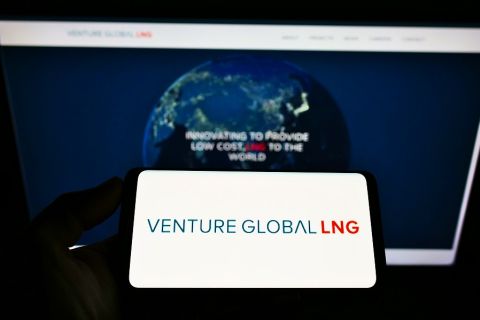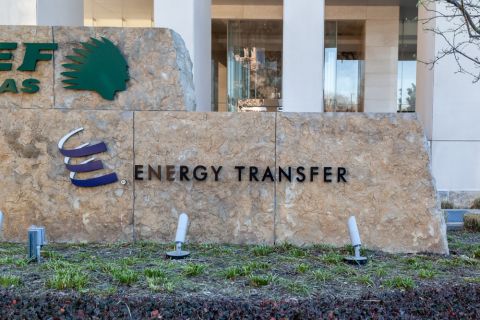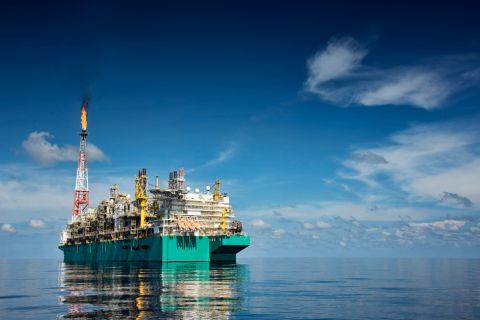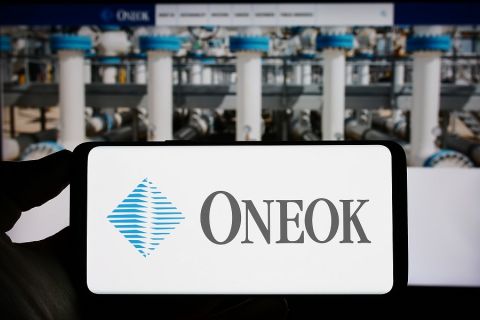From shale resources in North America to deepwater assets offshore Brazil to exploration acreage off East Africa, national oil companies (NOCs) are flexing spending muscles in pursuit of international production and reserves to meet both energy demand and market value for the home countries.
“National oil companies have been buyers in roughly 30% of all oil and gas transactions by value this year, which is a huge proportion of the market, particularly, since these companies have not historically played in some parts of the world,” said Jon Clark, leader, Oil and Gas Transaction Advisory Services for Europe, Middle East, India, and Africa, Ernst & Young.
Out of all of the NOC transactions so far this year, four out of five were in the upstream sector. These transactions are driven by countries without resources – “resource-seeking.” These countries and the NOCs are “looking to integrate up the value chain and acquire production that can either directly or indirectly benefit the home country’s economy,” he explained. Resource-seeking countries are like China, Korea, Japan, and India, for example. Those countries are actively acquiring resources worldwide. Chinese NOCs accounted for 50% of all NOC acquisition spending in 2011 and have acquired shale and oil sand assets in North America during 1Q 2012, Clark said. Other resource-seeking NOCs, like PTTEP in Thailand, are willing to spend big to acquire resources and have the backing of the home government for that level of spending. The counteroffers between PTTEP and Shell for Cove Energy and its assets offshore East Africa are not a surprise, according to Clark. The last offer from PTTEP was for US $1.9 billion. “There is a bidding war between an NOC and an IOC [international oil company]. For the NOC, everything leads back down the value chain to transactions that have some financial, security, or wider economic benefit for the host country of the NOC. It is very rare that transactions are done purely for investment returns. “For PTTEP, it is the gas resource that is closest relatively, except Australia, than some of the other supply sources that might be available. Again, it is a strategic opportunity, just for a different strategic reason,” he explained.
It is in the more strategic assets where competition between IOCs and NOCs will increase. “It has to do with the fact that companies that have the balance sheet advantage to exploit in the current market are the majors or the large caps and NOCs. For large transactions, that is your buyers’ universe,” Clark said.
“Where there is a strategic opportunity in an area like East Africa or offshore Brazil, for example, you’re going to see massive competition between IOCs and NOCs,” he added.
NOCs focus on the Americas
There are opportunities for well-capitalized NOCs. In the first five months of 2012, NOCs have deployed $16 billion internationally, which is a huge amount, according to Clark.
“The activity levels are increasing. The share of transactions is increasing. And the focus on the Americas is increasing, particularly in the unconventional plays in North America,” he said. Companies from China, Japan, Korea, and India have been spending a lot of capital on shale plays and oil sands projects in the US and Canada. The biggest attraction in Canada, for example, is the likelihood that both natural gas and syncrude will find export markets in Asia. PetroChina, China National Petroleum Corp. (CNPC), China National Offshore Oil Corp. (CNOOC), Sinopec, and Sinochem have been acquiring properties in North and South America. Other NOCs opting into North America include Statoil, Sasol, and Petrobras. “One attraction for shale gas or liquids-rich shale projects is that many of the owners of those assets have big development and capital needs. These companies need strong financial partners. So there is a catalyst for a financial transaction,” Clark said. “Secondly, and I think this is more likely in Canada than in the US, some of the product is likely to make it to Asia with the infrastructure in place to get it to the coast. “The third driver is access to technology. China has 20% of the world’s shale gas resources. If it can unlock that, it will be hugely transformational for both its economy and the global, or certainly the Asian gas market,” he said. The value of technology for an NOC is potentially massive. “It’s not as simple as giving someone the keys to the little black box. It is the experience of how the IOCs operated these projects in a broad range of environments around the world. Will NOCs learn quickly and make IOCs redundant? I don’t think that is going to happen overnight.
“IOCs are going to continue to be important players in the market. But, the NOCs are not just going to sit back in the home country and watch the rest of the world go by,” Clark said.
Asian acquisitions
The Chinese companies already have a big international footprint, yet the emphasis seems to be shifting from expanding into more new countries toward growing and consolidating the existing areas of operation.
“The Chinese NOCs are starting to operate much more like IOCs rather than pure NOCs just targeted on buying reserves anywhere in the world,” Clark explained. “The sophistication of the potential acquirers has really increased over the last five years.”
Within the last year, for example, some of the deals signed by Chinese NOCs in the Americas include Sinopec, $2.16 billion for Daylight Energy of Canada, $390 million for 30% of Petrogal Brasil, and $2.5 billion for one-third of Devon Energy’s acreage in five shale plays; PetroChina, $673 million for the remaining 40% interest in the MacKay River oil sands project and an estimated $1 billion for 20% of Shell’s Groundbirch assets in Canada; CNOOC, $1.1 billion for a one-third interest in Chesapeake’s Eagle Ford acreage and $1.1 billion for Niobrara interests, $2.1 billion for Opti Canada, and an undisclosed sum for interests in Nexen’s Gulf of Mexico (GoM) assets; and Sinochem, $1 billion for Total’s stake in the Cusiana field in Colombia.
Other Asian NOCs opting for North American assets include Korea National Oil Corp. (KNOC) joining a consortium that paid $7.15 billion for El Paso’s E&P business and $1.5 billion for Eagle Ford acreage from Anadarko Petroleum; Petronas buying Progress Energy Resources in Canada for $5.5 billion; and India’s ONGC was reported in July 2012 to be in discussions with ConocoPhillips for a $5 billion share of the latter’s Canadian oil sands.
The Indian Ministry of Petroleum set a target for its NOCs to spend $15.1 billion for international acquisitions through 2017. In 2012, Pertamina is planning to increase its capex to $5.94 billion with 80% of the total investment to be spent on mergers and acquisitions to expand its upstream portfolio. This points to continued strong purchase power for NOCs in the coming years as the have-nots pursue resources and the haves build on the strength of existing resources.
NOCs see value in joint ventures
One way NOCs are going abroad is by partnering up with IOCs and other NOCs. About 80% to 85% of NOC deals since 2011 have involved joint ventures.
“One thing we talk about is that we see more collaboration,” Clark said. “The Rosneft-ExxonMobil joint venture in the Russian Arctic is an example. I think we’ll see more of that type of collaboration.”
There are three points companies should address when approaching joint ventures, according to Clark. First, planning is highly important in working out the company’s objectives for the venture. “This is the only stage in a joint venture where you control your own destiny,” he said.
The second point deals with the ending of a joint venture. “It’s very hard to work out a satisfactory exit. It is like getting married and planning for your divorce at the same time, which is an unusual concept. If you don’t do that, it is really messy at the end,” he added.
Third, “some of the partners out there are struggling with access to finance. The concept of project finance is often unfamiliar to NOCs because these companies normally just apply to the government for a grant or something like that,” he said.
However, it is not just IOCs that are partnering. NOCs are working together as well. In June, ONGC and CNPC signed a memorandum of understanding (MoU) that covers areas including cooperation in upstream E&P areas and midstream natural gas processing. These areas extend to joint participation in suitable hydrocarbon projects in other countries of interest.
Petroleos de Venezuela (PDVSA) created a joint venture with Gazprom for development of the Bachaquero Tierra and Lagunillas Tierra mature fields in Venezuela. PDVSA also signed an MoU with Rosneft for the Carabobo 2 heavy oil project.
Abu Dhabi National Oil Co. (ADNOC) formed a partnership with KNOC and GS Energy to develop three oil fields in the United Arab Emirates.
PetroVietnam inked deals with both Lukoil and ONGC Videsh Ltd. for long-term cooperation in oil and gas exploration and development.
This type of arrangement often brings companies with expertise in LNG into working arrangements with NOCs that have resources to develop, such as Statoil in Venezuela or Petronas in Egypt.
Gazprom, Sonatrach resources, markets
Whether it is Saudi Aramco with crude oil or Sonatrach and Gazprom with natural gas, the resource-rich companies are very much focused on developing both the resources and the downstream markets for the products.
“If you are a Sonatrach or a Gazprom, you have a particular resource. What is the benefit for the home country?” Clark asked. “A lot of it is driven by the position in the value chain. Gazprom and Sonatrach have the opportunity to buy into the gas infrastructure in Europe.
“The strategic driver for that is to help secure the market for the product and therefore the value of that product for the host country,” he explained. “Part of the recent mindset shift has been driven by the fact that the world is currently oversupplied with natural gas. If you are a Gazprom, you can no longer rely on your gas always finding a market at a sensible price. It might not always find a market unless it makes strategic forays into the downstream world.”
For Gazprom, that foray includes building more pipelines into Europe and the Far East. The Nordstream Pipeline through the Baltic Sea and its efforts to jump start its LNG business with the Shtokman field are examples of building infrastructure to tap into markets.
“We anticipate further development of interregional and intercontinental trade in natural gas due to the uneven distribution of resources. Moreover, we expect that after the completion of gas pipeline systems in Eurasia between Algeria and Western Europe, as well as between Russia and China, a giant transcontinental gas market covering Europe and Asia can be formed,” said Alexander Medvedev, deputy chairman, Management Committee, Gazprom, at the World Gas Conference 2012 in June in Kuala Lumpur, Malaysia.
Gazprom’s global reach is an indication of how NOCs with resources are seeking to influence partners. The company has E&P operations in 17 countries worldwide.
In 2011, the major volume of geological exploration was carried out in Uzbekistan, Tajikistan, Vietnam, Algeria, and Equatorial Guinea. Gazprom completed a well on the Akio Block in Bolivia and started commercial production. The company also conducted pre-investment sur- veys of promising oil and gas areas in Turkmenistan, Malta, Sri Lanka, UK, and Venezuela, according to its 2011 annual report. Gazprom Neft signed an agreement to develop four hydrocarbon areas in the exclusive economic zone of Cuba in the GoM.
Sonatrach is another NOC that has focused on its downstream markets, especially in Europe. The company is planning to build another pipeline to Europe through Italy in addition to the MedGaz pipeline through Spain that began operations in 2011.
The company also remains focused on E&P. Sonatrach Exploration estimated the country has another 2,650 Tcf of potential shale resources. Sonatrach has intensified its exploration efforts to highlight the resource potential associated with shale gas plays, said Mohamed Kaced, Sonatrach Exploration, in a presentation at the World Gas Conference.
Following the completion of the evaluation phase, Sontrach is preparing to drill its first shale gas well in the second half of 2012. The company is considering seeking partners for its shale gas development.

Many NOCs are leading the way into frontier areas. The semisubmersible Aker Barents was drilling for Statoil in the Barents Sea. (Photo by Harald Pettersen; courtesy of Statoil ASA)
NOCs expanding internationally
Other NOCs with large domestic resources and emphasis on expanding operations include Statoil, Petrobras, and Petronas.
Statoil made recent discoveries in the Barents Sea and is focusing efforts in that area of the Norwegian Continental Shelf (NCS). The Norwegian Petroleum Directorate launched Norway’s 22nd licensing round earlier this year, with nominations from E&P companies looking to carry out exploration activity in previously untouched northern waters in the Norwegian and Barents seas.
Encouraged by state-owned operator Statoil’s large Skrugard (Block 7220/8-1) and Havis discoveries (which together contain reserves estimated between 400 MMboe and 600 MMboe) and its aggressive exploration campaign in the surrounding vicinity, a record level of interest was registered by 37 companies with 228 blocks nominated for inclusion. Of those nominations, 181 blocks were for the Barents Sea alone. Statoil also has considerable activity internationally in the Marcellus and Bakken shales and offshore GoM along with operations in 20 other coun- tries. The company is active in some of the hottest plays in the world, including offshore Brazil as well as Mozambique and Tanzania in East Africa.

Sonatrach is now focusing on its shale gas assets to maintain its supplies for sales to Europe. It is also working with other NOCs, such as Statoil, in its conventional development. (Photo by Jon Gaute Espevold; courtesy of Statoil)
Petrobras is parlaying its deepwater production expertise into international operations. However, following its success with its own presalt field development, the company is putting more of its assets into the domestic market. In its 2012-16 business plan, the company expects to spend $6 billion in international projects currently being implemented, with E&P activities representing 83% of the total. The plan also increased the amount of divestments and asset restructuring during the period to $14.8 billion with an emphasis on divesting foreign assets.
In Brazil, the company will spend $131.6 billion on E&P, with 69% allocated to production development, 19% to exploration, and 12% to infrastructure. Spending in the presalt cluster will total 51% of this investment. The company has targeted production of oil and NGLs of 3.0 MMboe/d in 2016 and 5.2 MMboe/d in 2020.
In the US, Petrobras began production in February 2012 at the Cascade field through the FPSO BW Pioneer, which is the first FPSO to produce oil and gas in the GoM. The vessel is about 250 km (150 miles) off the coast of Louisiana in 2,500 m (8,250 ft) water depth. The FPSO can process 80,000 bbl of oil and 17.65 MMcf/d of gas.
US production will be a part of its overall target for 2020 for international output of 500,000 boe/d.
Petronas is using its experience with its Bintulu LNG plant in expanding its operations both domestically and internationally. The company recently opened the first LNG receiving terminal in Malaysia in June. At the same time, it signed a contract to build the first floating LNG plant to tap reserves off Sabah.

Development of Arctic resources is high on the list for Russian NOCs Gazprom and Rosneft. (Photo courtesy of JSC Gazprom)
In Canada, Petronas is pursuing another LNG project with reserves it acquired through the purchase of Progress Energy Resources Group for roughly $5.5 billion. The North Montney acreage would give the Malaysian company an opportunity to participate in an LNG plant on the west coast of Canada.
“Assuming the deal closes as anticipated, we believe it unlikely that Petronas will be shopping for further assets in western Canada anytime soon,” an analysis of the deal by Barclays Equity Research stated. “Petronas should now have enough gas in place to support development of an LNG facility several times the size of the 1 Bcf/d plant that is currently being contemplated.”
Dual roles chafe some NOCs
Not everything is working in Petronas’ favor. As with NOCs in several countries – Venezuela, Mexico, India, Argentina, and Bolivia – government interference and the use of companies’ funds to meet government expenses have hamstrung the efforts of the NOCs to effectively increase E&P activities, which ends up being to the detriment of the government.
“In our experience, the objectives of the NOCs are measured in terms of resources or production rather than dollars invested,” Clark said. “From a government’s point of view, it is about creating jobs or security. There’s usually more to the story than just meeting the internal rate-of-return hurdle.”

With an emphasis on its presalt discoveries, Petrobras is selling some of its foreign assets. The Stena Drillmax 1 was drilling offshore Brazil. (Photo cour tesy of Petrobras News Agency)
At the recent World Gas Conference, Petronas CEO Shamsul Azhar Abbas criticized fuel subsidies with the Malaysian Prime Minister Najib Razak in the audience. When the prime minister spoke, he said the subsidies meet socioeconomic objectives.
Like Venezuela and Mexico, Malaysia uses the NOC for its own cash source. Over recent years, government spending has increased steadily with the price of oil. Petronas covers as much as 45% of the country’s budget, which cuts deeply into what the company is able to do. Even well run NOCs like Petronas must still meet government requirements for the economy.
Whether it is a have or a resource-seeking company in oil and gas resources, the same economic drivers can help or hinder the growth of an NOC.
Recommended Reading
Venture Global Acquires Nine LNG-powered Vessels
2024-03-18 - Venture Global plans to deliver the vessels, which are currently under construction in South Korea, starting later this year.
Energy Transfer Asks FERC to Weigh in on Williams Gas Project
2024-04-08 - Energy Transfer's filing continues the dispute over Williams’ development of the Louisiana Energy Gateway.
Canada’s First FLNG Project Gets Underway
2024-04-12 - Black & Veatch and Samsung Heavy Industries have been given notice to proceed with a floating LNG facility near Kitimat, British Columbia, Canada.
Apollo Buys Out New Fortress Energy’s 20% Stake in LNG Firm Energos
2024-02-15 - New Fortress Energy will sell its 20% stake in Energos Infrastructure, created by the company and Apollo, but maintain charters with LNG vessels.
FERC Approves ONEOK Pipeline Segment Connecting Permian to Mexico
2024-02-16 - ONEOK’s Saguaro Connector Pipeline will transport U.S. gas to Mexico Pacific’s Saguaro LNG project.





